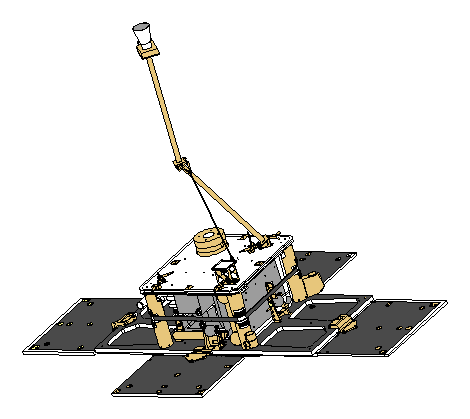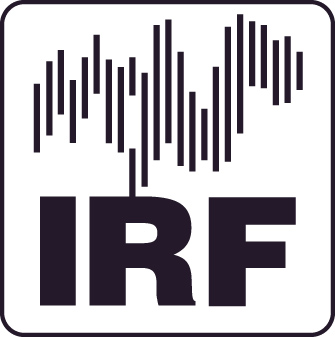
Astrid-2

Astrid-2
Astrid-2 is a Swedish pioneering low-budget satellite mission, being
the first micro-satellite dedicated to comprehensive auroral research.
With a payload mass of less than 10 kg, new innovative techniques and
low-mass solutions had to be used for developing the various sensors and
sensor deployment systems. Since launch on 10 December 1998 Astrid-2 has
collected more than 20 Gibytes of high-resolution and high-quality data
on auroral electric and magnetic fields, particles, emissions and plasma
characteristics from approximately 3000 polar orbits at an altitude of
about 1000 km. The Astrid-2 mission ended on 24 July 1999.
| Period of operation: |
December 10, 1998 - July 24, 1999 |
| Orbit: |
Circular, 83 deg. inclination |
| Altitude: |
1000 km |
| IRF instruments: |
MEDUSA,
Miniaturized Electrostatic DUal-tophat Spherical Analyzer (PI: Olle Norberg,
David Winningham) |
|
PIA, Photometers
for Imaging the Aurora (PI: Olle Norberg, Hans Lauche) |
| Contact: |
Olle Norberg (Now at the Swedish National Space Board) |
| Data available on web: |
MEDUSA-Data Plotting Menu
|
|
Plots of MEDUSA and LINDA data produced by Yasuhito Narita |
| Satellite homepage: |
Astrid page at OHB Sweden(formerly the Space Systems Division of the Swedish Space Corporation) |
| Project description: |
Blomberg et.al., Astrid-2: An Advanced Auroral Microprobe, in
Proc. of COSPAR Colloquium on Scientific Microsatellties, Tainan,
15-18 December 1997. |
|
Marklund et.al., Astrid-2, A Low-Bud get Microsatellite Mission
for Auroral Research, in Proc. of 13th ESA Symposium on E uropean Rocket
and Balloon Programmes and Related Research, Öland, Sweden,
26-29 May 199 7, ESA SP-397, 387-394, 1997. |
| Result highlights: |
see Astrid-2 publication list at KTH |
External links:
[IRF Home] [SSPT Home]
Last update 2015-09-01
by Jesper Lindkvist




